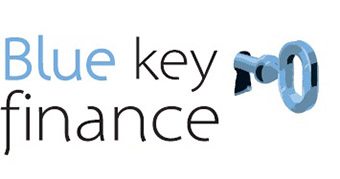Unlocking equity for property investment
At Blue Key Finance, we are now seeing more investors and more than 70% of these investors are preferring to buy ‘off the plan’ versus established properties. As a home owner, you may want to look at unlocking equity in your own home, but where do you start?
What does unlocking equity mean?
To understand how unlocking equity can be used to buy a rental property you need to understand how a bank considers a loan application. Banks look at two main issues—security and serviceability.
Security pertains to the market value of the asset supporting the loan. The bank needs to be comfortable that if you cannot pay back the loan and go into default, the sale of your property will enable most, if not all, of the loan to be repaid.
Serviceability relates to the ability of you making the loan repayments.
Security
Security is generally measured by way of the ‘loan to value ratio’ (LVR). The LVR is the amount of the borrowing represented as a percentage of the value of the security. Due to the differences in risk profiles between different types of properties, banks are generally happy to accept a maximum LVR of 80% for residential properties and 65% to 70% for commercial properties. A lender may accept a higher LVR under the condition that you take out a mortgage insurance policy. In this case, the cost of borrowing will increase as the premium on a mortgage insurance policy is significant.
The possibility of loan approval, and an approval without mortgage insurance can be assessed by determining if the loan on your existing property, together with the new loan on the investment property, would exceed the maximum LVR.
For example, assume your home is currently worth $750,000 and the mortgage on your home is $500,000, equating to an equity position of $250,000. Imagine now you find a good value investment unit for $350,000 and you want to know if the bank will lend you the whole $350,000 to buy the unit. You can work out your LVR as follows:
$500,000 + $350,000 / $750,000 + $350,000 = 77% your needs and the repayment strategy that will see you become mortgage free a lot sooner.
If the bank has the normal 80% maximum LVR requirement, you will pass the security criterion. The bank will of course conduct its own valuation of the properties to verify their value before concluding the LVR requirement has been satisfied.
Provided you also satisfy the serviceability requirements, it is likely the bank would fund the full value of the investment property without you having to contribute your own money to the purchase. In other words, the bank is effectively allowing you to access equity in your home to buy the investment property.
Serviceability
Serviceability is generally measured by way of the debt service ratio (DSR). The DSR is usually calculated as your total monthly debt repayment amount as a percentage of your total monthly income. Banks will generally accept a maximum DSR of 35% as a rule of thumb.
For an investment loan, the lender will generally allow you to include the expected rent from tenants in adding up your total income. However, most lenders will discount the rent amount by 20% to account for rental property expenses, as well as potential tenant vacancies. Interestingly, some lenders may take into account expected negative gearing tax benefits from the rental property.
Accessing equity in your home—the tax trap
Redrawing mortgage repayments from a home loan is one of the common tax trap investors fall into when using equity to fund investment property purchases.
While the interest attributable to the investment property is tax deductible, redrawing the funds from the home loan to buy the investment property will effectively taint the home loan such that it will become a mixed purpose loan. To calculate the tax-deductible interest on the mixed purpose loan, an apportionment calculation will need to be done every year, which is less straightforward and can be costly.
Even worse, if as an investor you decide to rent out your own home and use redrawable funds to buy a new home, the interest on the redrawn funds are not tax deductible at all as the funds on which the interest is incurred was used to purchase a home, which is not income producing.
An effective way to get around this tax trap is to use an offset account because redrawing monies from the offset account will not disturb the purpose and principle amount of the original loan. However, the offset account will need to be in place when the original mortgage was drawn down to purchase the home.
A final word
Knowledge is power. Understanding everything about unlocking equity is only the start. You then need to get access to a great Finance Broker who can structure your debt appropriately, while finding you the best product and rate, and that’s where we come in.
If you haven’t already, click here to download our FREE E-Book on “Investors” or email us instead and we’ll end it to you within 24 hours.




Leave a Reply
Want to join the discussion?Feel free to contribute!